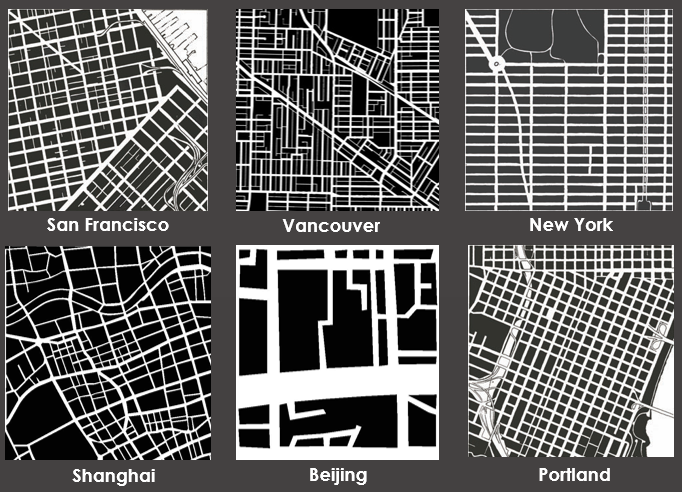The Invisible Design Features of Cities
To the untrained eye, beautiful skylines, impressive subway systems, and lively public parks characterize great cities. However, there are also a number of invisible design features that characterize the best cities – urban growth boundaries, transit-oriented development, walking and biking pathway density, and small blocks are among the most important of these design features.
Last week, I attended the Climate Leaders Summit in Los Angeles, working with colleagues from Rocky Mountain Institute to interface Chinese cities and American cities. I have been working on urban sustainability issues, mostly focused on China, at Energy Innovation.
This high-level summit brought in mayors from about two dozen U.S. and Chinese cities, and national leaders such as Xie Zhenhua, China's special representative for climate change affairs, and Todd Stern, the United States' senior climate change negotiator.
One overarching theme in almost all of the speeches from American mayors was their actions to increase biking and public transit use. Urban growth patterns in U.S. cities are typically characterized by car-dependence, sprawl, and suburbia. American mayors now face the challenge of reversing these patterns. Mayor Annise Parker spoke poignantly on how Houston has been anxious to relinquish its title of one of America's smoggiest cities (along with Los Angeles) through setting up two new light rail lines. Mayor James Brainard, of the small city of Carmel, Indiana (population of 90,000) spoke of bike-share and public transit helping Carmel to be a cleaner and more mobile city.
Caption: Mayor Annise Parker talking about Houston's ambitions to become a low-carbon city in terms of transportation (Source: http://uschinaclimateleaderssummit.com/photos.html)
The content of Chinese mayors' speeches indicated that China is learning low-carbon development and economic growth can go hand in hand. I spoke with a fleet manager from IT industry company, BYD, who praised Chinese cities for fast and effective investment in electric buses. China has the most bike-share programs in the world. The country is also home to some of the world's largest bike-share programs. For example, Hangzhou's bike-share program provides 78,000 bikes, making it the largest program in existence today. A number of mayors also brought up the advancement of green buildings. An official from the city of Guiyang, the delegation with whom I was working, told me they were using passive building technologies to increase insulation on a number of buildings there.
While these features will significantly improve cities, U.S. and Chinese mayors must first bring into their messages the importance of implementing foundational urban design principles. Electric vehicles, bike-sharing programs, and green buildings will greatly contribute to low-carbon development, they must be placed on top of a well-designed urban form for their full impact to be realized.
These "invisible" urban design features are as follows:
1. Urban growth boundaries: Urban growth boundaries save land and compel cities to build with quality over quantity. Great cities are often those with natural growth boundaries – San Francisco, Hong Kong, New York City—which prevent them from sprawling out geographically. Portland's urban growth boundary has spurred much infill development, making the city an extremely attractive place to live.
2. Transit-Oriented Development: Density must be matched with transit capacity. Cities can drastically reduce traffic congestion and improve livability by densifying around areas where the best transit options exist.
3. Connected walking and biking paths: While bike-sharing programs are great, a city without a dense and connected network of paths will find it difficult to ever become a great biking city. The same with walkability – even if a particular sidewalk is beautifully designed, people will not see walking as a real transport option unless sidewalks are logically laid out and allow pedestrians to reach every destination.
4. Small blocks: Superblocks with wide, non-walkable roads are still a dominant form of urban development in China. Los Angeles' humongous blocks and car-centric roads exemplify this. Small blocks are a foundation for connected walking paths as well.
Caption: Block sizes in various cities at the same scale. (Source: Energy Foundation China)
Both the U.S. and China must learn that while grandiose projects such as electric bus fleets and bike-sharing programs are great signs of a livable city, most sustainable urban growth still lies in the fundamentals of urban design. The four urban design features mentioned above should be discussed more often by mayors and other urban leaders in their conversations about sustainable urban growth.


